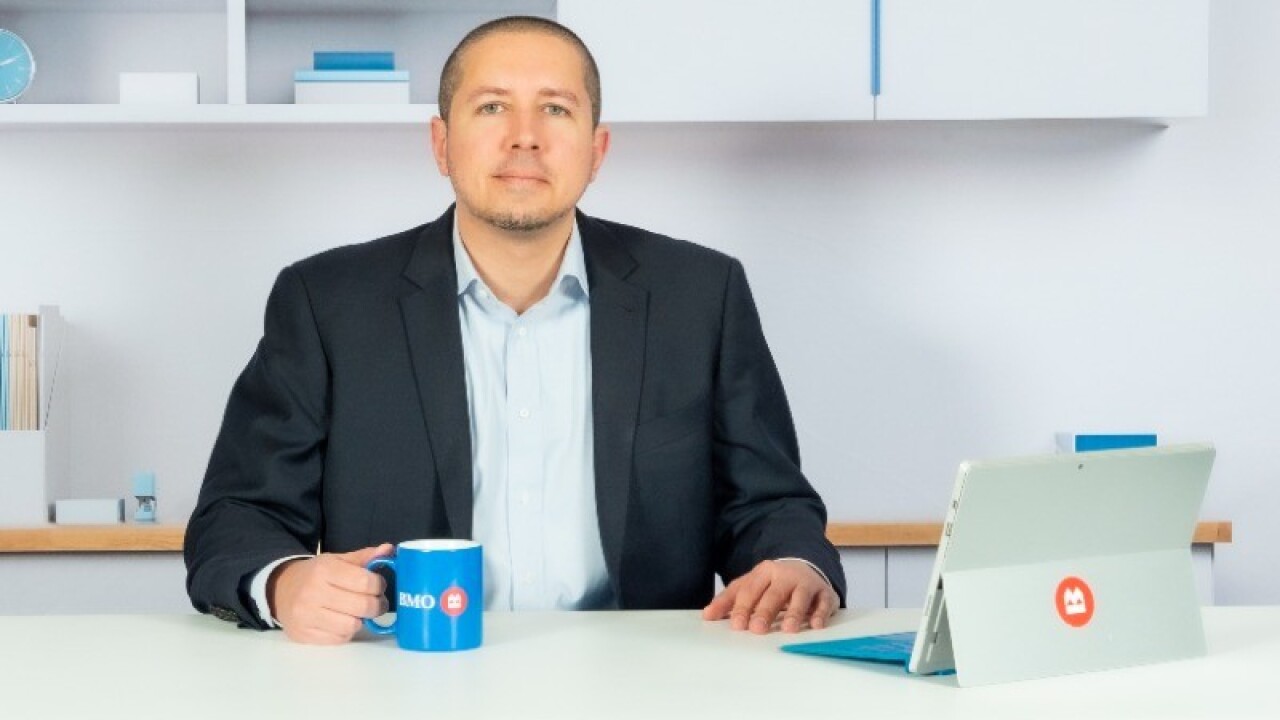Credit unions know a growth opportunity when they see one – to the tune of more than 25% of the U.S. population.
That's the number of millennial consumers in the market now, according to U.S. Census data, a figure that – at 83 million – outnumbers the Baby Boomer generation. But distrust of the big banks is rampant among the younger generation, and many don't even have basic banking relationships.
As a recently
This is where credit unions can step in.
For example, Royal Credit Union, a $1.86 billion institution based in Eau Claire, Wisc., has embarked on a program called "Smart Connection," which is designed to provide financial literacy education to consumers between the ages of 18 and 25 – that is, when young people are taking first jobs, getting married, having children, renting apartments, taking out mortgages and buying cars.
Royal CU's three-person Smart Connection team utilizes social media, real-talk outreach and other platforms to tap into the hopes and concerns of college students on campuses in western Wisconsin and eastern Minnesota.
"We want the 25-and-under crowd to know that the Smart Connection team is here for them," said Megan Larsen, Smart Connection team lead. "Our team of fiscally fit young women will help connect them to financial resources so they can conquer 'adulting' like a pro."
According to Andrea Finn, digital marketing manager at Royal CU, Smart Connection is an extension of the credit union's "School $ense" program, which is in place at the credit union's 28 student-run branches.
"Our Smart Connection team overlaps with our 'School $ense' high school teams to make a nice transition to the next financial phase in the lives of our members," she said. "The Smart Connection was developed to connect this age group to resources to help young adults learn and grow."
Smart Connection, Finn explained, hopes to remain fresh and innovative because the three women helming the program are "relatable" young adults who can talk about real financial barriers that they and others their age are facing. "No topic is off-limits or taboo," she said. "No question is too simple or too complex. Our team will be constantly reaching out to the young-adult age group, connecting them to resources that truly fit their life circumstances."
But Royal CU is aware of some obstacles in reaching out to young people. One such hurdle, said Larsen, has to do with all the other marketing "noise" that 18-to-25-year-olds face on a daily basis.
"The difference with our program is that we talk about financial topics that interest young adults," she said. "This 25-and-under crowd is often skeptical of information they receive; that's the reality of living in a world of social media with constant updates. We are a credible, non-threatening source for this group to look to for helpful financial advice and lifestyle tips. We have the information that this age group wants to know about, including the ins-and-outs of a credit score, how to budget, the deal with credit cards, information about retirement planning and why now is a good time to start planning."
But college students do not comprise the primary focus of Smart Connection. "We're aiming to reach anyone in the 25-and-under crowd to help them navigate life's financial decisions after their 18th birthday," Larsen said. "Education can be a large piece of this life-stage, but it's certainly not our sole focus. It can be challenging for an 18-year-old to calculate the cost of living independently for the first time, or tips about grocery shopping on a budget. That's what the Smart Connection team is all about – sharing how their stories are unfolding in the hopes that others can relate."
Not surprisingly, Royal CU wouldn't mind boosting its millennial member base, either. "We feel they are a good group to attract based on our core values," said Finn. "This age group can relate to the credit union difference, specifically the fact that we are a cooperative business structure that prioritizes community give-back."
Young & Free
One of the most well-known CU youth-engagement programs is the "Young & Free" initiative, which has been run by various credit unions acros the country for several years. But Finn was quick to try to differentiate "Smart Connection" from its better-known, national counterpart.
"We are constantly evolving and improving our member experience through personalized programming, such as real-time talks and financial education outreach," she said.
"Young & Free" was created by Currency Marketing, an integrated marketing agency for credit unions led by Tim McAlpine, who told CU Journal that the program began as a project for Common Wealth Credit Union in Alberta, Canada in 2007.
"At the time, we had worked with Common Wealth to identify an opportunity to attract and teach young people about basic financial concepts," McAlpine said. "Social media was just emerging and there was not a clear path for corporations to get involved."
So, they came up with the idea of a Young & Free "Spokester" to be hired through an "American Idol" TV show-style contest. "The winner of this contest would win a full-time year-long job to be the voice for the 25-and-under crowd," he added. "They would receive a great salary, all the gear they needed, use of a leased vehicle and free rein to publish video and written content on a dedicated website." In tandem, the credit union would offer a free checking account and other perks for the Spokesters to promote to their peers.
By early 2008, McAlpine noted, it was clear that this was a "winning strategy" and the "aging" credit union issue was not just restricted to Alberta.
"It was at this point that we decided to franchise the idea and offer one exclusive license per Canadian province and U.S. state," he noted. "Once word got out, credit unions began to express interest and the momentum started to build."
Since that time, credit unions in two Canadian provinces and eleven U.S. states have adopted the "Young & Free" program. In the U.S., three credit union leagues have run Young & Free at the state level, including Mississippi, New Mexico and Maine.
Characterizing the program as "hugely successful," McAlpine cited that there have now been 38 Young & Free Spokesters hired and more than 250,000 new young adult members attracted to participating credit unions.
"Credit unions that adopted the program, have kept it going for 42 months on average – which is a very long time for a credit union to run a marketing campaign," he stated. "At its height, there were nine Young & Free regions running concurrently. There are now three, Young & Free Maine, powered by Maine's Credit Unions; Young & Free Michigan, powered by Michigan First Credit Union [a $781-million institution based in Lathrup Village, Mich.]; and Young & Free Alabama, powered by Guardian Credit Union [$355-million; Montgomery, Ala.]."
McAlpine said that participating credit unions have kept the Young & Free program fresh by employing a number of tactics.
"The annual Spokester search drives a lot of social media and traditional media attention and a ton of traffic to the sites," he said. "Once the new Spokester is in place, they create a lot of content and add their personal touch and personality to the program. Typically, they create one new video per week, four blog posts per week and multiple social media posts per day. The Spokesters are also very visible in their communities at events and around universities and colleges."
In addition, many participating credit unions have run annual Young & Free Scholarship contests plus "all sorts of other interesting promotions" throughout the year, McAlpine said.
Recently, Currency Marketing started adding professionally-produced financial education content to the programs to augment the content that the Spokesters create. "This content is through our "It's a Money Thing' financial education content program and it's included with Young & Free and also available to all credit unions," McAlpine stated. "This has been very well received by young adults."
More than 80 credit unions are now using "It's a Money Thing."
McAlpine concurs with Larsen in that "noise and apathy" pose great obstacles in reaching out to youths. "Social media was originally thought to be the perfect vehicle, but it's now so hard to cut through, especially for companies," he lamented. "Financial education is seen as boring and dull and is not something that young adults will actively seek out themselves."
But he found that clever, engaging and humorous content can indeed cut through. "There needs to be dedicated budget and resources at credit unions to make it happen," he noted. "This is why the Spokester model has really worked well."
Young & Free Maine
As noted above, the Maine Credit Union League (MCUL) has participated heavily in "Young & Free" in collaboration with Currency Marketing.
Debra Johannes Trautman, vice president of corporate marketing at MCUL, and Jon Paradise, vice president of governmental & public affairs at the league, said that local CU membership among consumers between the ages of 18 and 25 jumped by 25% in five years thanks to "Young & Free."
The Maine league coordinates many of the events and contests related to Young & Free, while individual credit unions invite the Spokester to key events and re-post educational videos on social media.
The league, they added, understood the importance of reaching out to young adults in new way as a way to ensure the future growth of Maine's credit unions, after having seen some videos produced by Currency Marketing/Young & Free.
"We proposed the Young & Free program in 2011 to credit unions in our state, and overwhelmingly credit unions supported and continue to support," MCUL said. "They believe and see the value of the financial literacy it provides. This program prepares young adults for that next step in life, whether it be managing finances via mobile banking or taking out a loan for a car or home."
In partnership with Currency Marketing, they noted, the Young & Free Maine program was developed with online and social media contests, blogs and videos on topics that are important to the 18-25 targeted audience, and a spokesperson who talks to young adults about the issues they care about.
MCUL explained that they try to keep the program fresh and interesting for young people by "constantly looking" for new ways to keep the program relevant and innovative. For example, Currency recently added a new animated video series on financial literacy for Maine's Young & Free program. "This new way of educating young adults has been effective in keeping the program fresh," they stated. "Each Spokester [who usually has an annual or two-year term] makes the program very different, by blogging and following what is unique in Maine."
In addition, as most millennials have moved to different social media platforms – from Facebook to Instagram and Snapchat -- MCUL seeks to keep content fresh, and contests different. "We test and pilot new events," they noted.
Moreover, MCUL maintains direct one-on-one contact with young adults to gauge their needs and interests – typically at colleges, festivals, sporting events and fairs. "We add new contests, new ways to engage students/young adults, and travel to different events," they indicated. "[For example], our 'Bucks for Bucks' contest helps students with cash for books, our 'Sound-off' band competition supports young musicians, and our videos on young entrepreneurs gives insights on new business opportunities in our state."
As millennials will soon be the dominant population group in the US, engaging with them is of the highest priority for credit unions.
"Millennials are looking for a financial partner," MCUL said. "Credit unions are a great resource for millennials – providing them with a head-start in life and helping them manage a budget or understand a credit score. The credit union philosophy contains a shared culture – Maine's Credit Unions have collaborated to bring this program to young adults – something banks would probably not do."





